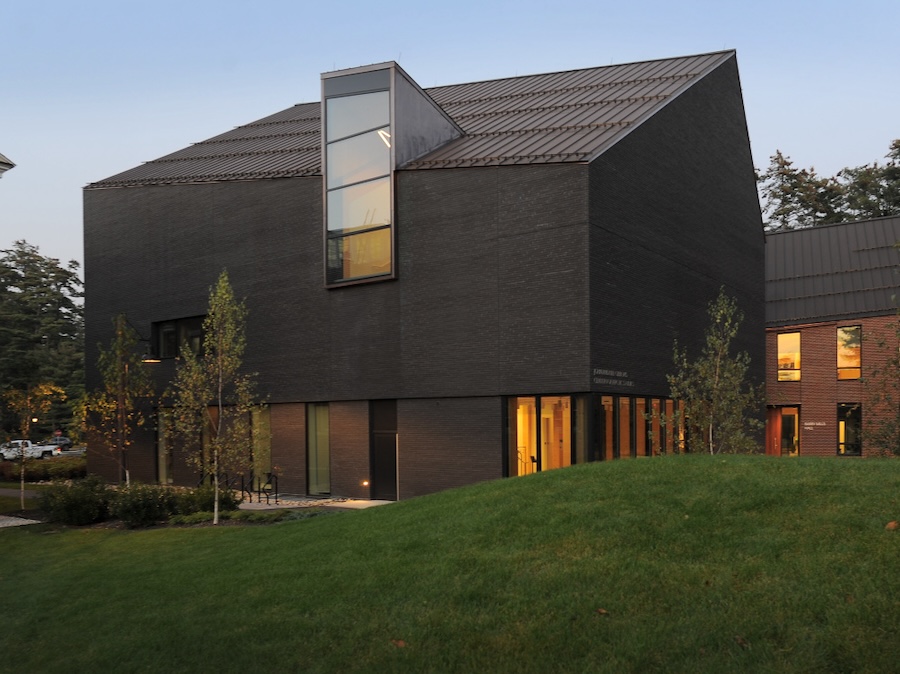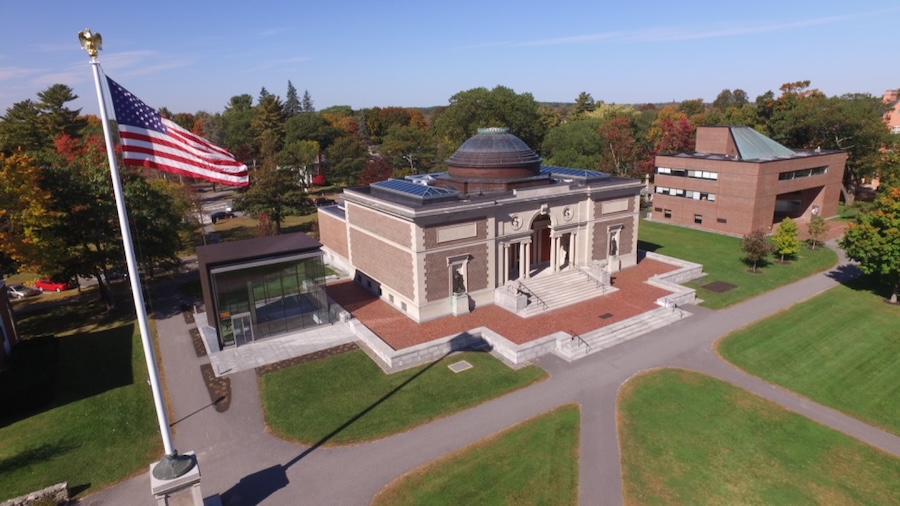When researchers type a query into Bowdoin's library search bar now, they are presented with a trove of information not just from the linked libraries of Bowdoin, Bates, and Colby Colleges, but also from Special Collections, the Museum of Art, and the Arctic Museum.
The College's library has for many years shared a search feature with Bates and Colby, allowing patrons to research sources and borrow books from all three institutions. Extending this network to also include the College's museums has been a long-held dream of Bowdoin's administration.
Kat Stefko recalled that one of her first work meetings, held soon after she started her new job in 2015 as director of the George J. Mitchell Department of Special Collections & Archives, was a discussion about sharing technology across the College's cultural institutions.
At the time, however, Special Collections was in the “embryonic stage” of digitizing its assets and making them available online, she said. “So the idea of searching our collections and these other repositories was very farfetched. But it was a nice aspiration. The desire never went away.”
Part of the problem back then was that the Library technology was not up to the task of connecting different collections with mismatched software.

The exterior of the John and Lile Gibbons Center for Arctic Studies, which houses the Peary-MacMillan Arctic Museum.
But technology has finally caught up to the College's ambitions. In the summer of 2023, the Library made a major update to its catalog, replacing a system it had used for more than twenty years. One of the benefits of new system, called Compass, is its power to get databases to talk to one another.
The beauty of the new tool is that it greatly increases “discoverability,” the chances of a serendipitous stumble onto a surprising resource while looking for something else.
“With the new system, that initial idea of discoverability through a single system became more viable because the technology has improved so much,” Stefko said. “So what had been a mountainous project back in 2015 actually became a doable technological project in our new environment.”
This summer, Senior Interactive Developer David Francis and Systems Librarian Summer Unsinnworked together to start the information flowing.
"I'm always looking for things that I think would be most interesting for someone outside of the fine arts to come across that they could use for research,” Francis said. “So, for example, someone doing research on painted scrolls doing a search in the Library could discover real examples in the Museum of Art collection that they could reference and study."

Aerial view of the Bowdoin College Museum of Art in the Walker Art Building.
And a student trying to find books or articles about Picasso for an art history paper might be delighted to find that “the Museum of Art has sixteen Picassos,” Unsinn said, which they can then make an appointment to see in person.
In the process of getting Compass to work well, Unsinn, too, made her own serendipitous stumbles. “It was a fun project to work on because it opened my eyes to a lot of neat things that the museums have,” she said.
One of her favorite findings was a unique collection of cards circa 1900-1910 for Arctic adventurers. “The one that really cracked me up was a set of collectible cigarette cards for polar explorers. I just found that in the process of troubleshooting.”
Anne Collins Goodyear, codirector of the Museum of Art, said the new integrated search tool opens up an exciting new era, “one in which information about the College’s broad range of cultural resources—from works of scholarship and literature to works of art—can be made even more easily accessible to a broad community of researchers on campus and beyond.
It helps bring together bodies of knowledge and forms of expression from many different disciplines and historical eras and will undoubtedly help to provide the foundation for many new forms of inquiry and collaboration.”
TRYING OUT THE NEW SEARCH TOOL
Students and other researchers using the Compass tool can set many filters to narrow their searches. But keeping a search broad may yield more of those “stumble-upon moments,” as Unsinn calls them.
A search for Arctic explorer Robert Peary in the Compass toolbar, for instance, generates 1,323 results (although this number could change if more resources are added to the museums or libraries—the catalogs are updated every day).
The top item that comes up is Special Collections' Robert Edwin Peary collection. The next is Susan Kaplan and Genevieve LeMoine's 2019 book, Peary's Arctic Quest: Untold Stories from Robert E. Peary's North Pole Expeditions, which is available online or can be checked out of the Bowdoin Library. Following this is a peer-reviewed article, also available online. Then a series of old photos from Peary's northern travels are listed.
Perhaps you're intrigued by the two items listed under the Museum of Art. Narrow the parameters to view these and you will see information about a bronze bust of a hirsute Peary, made by William Ordway Partridge in 1899, and a 1911 painting of him in a crisp white Navy uniform, by Benjamin West Clinedinst.
 Latest News Articles
Latest News Articles Do you have an RSS newsreader? You may prefer to use this newsletter's RSS feed at:
Do you have an RSS newsreader? You may prefer to use this newsletter's RSS feed at: